Trends
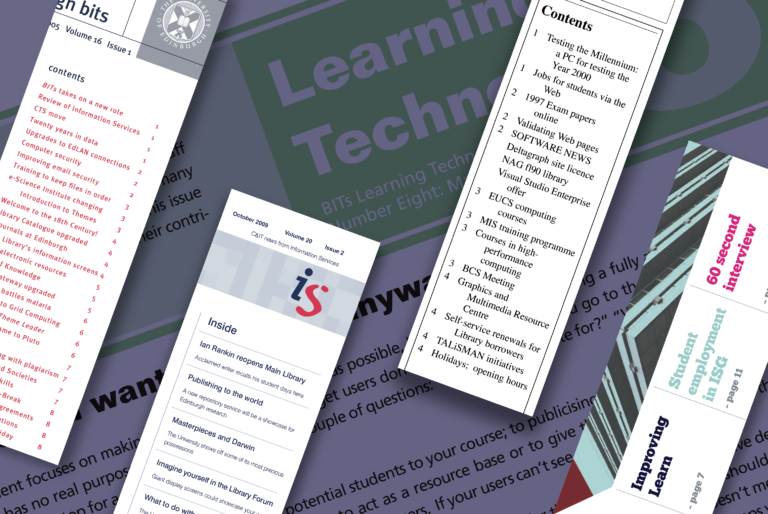
As the remit of Information Services expanded, so did the scope of BITs. From the early 2000s, BITs evolved into a longer, more structured two-colour newsletter, designed by the Graphic Design Team. This professionalised graphic design references visual elements associated with digital media, such as pixels, within a more cohesive visual identity. Uncover the turning points, change, and the emergence of Information Services, resulting in the convergence of multiple computing services.
Also take a look at the new Learning Technology Supplement, an additional newsletter which slotted into BITs. A joint publication produced from 2000 - 2005 by the Media and Learning Technology Service and Learning Technology Section based in the College of Medicine and Veterinary Medicine, this newsletter focussed on developments in the field of Learning Technology.
The Learning Technology Supplement provided a way to communicate new services to support teaching. In the early 2000s, initiatives to build web-based technologies to enhance teaching and learning were undertaken by some schools and colleges, such as the Colleges of Medicine and Veterinary Medicine and of Science and Engineering, as well as by different UK-wide projects. Learning Technology, as a team, aimed to provide these services more widely to both increase uptake as well as to better understand the technology needs of different subject areas.
|
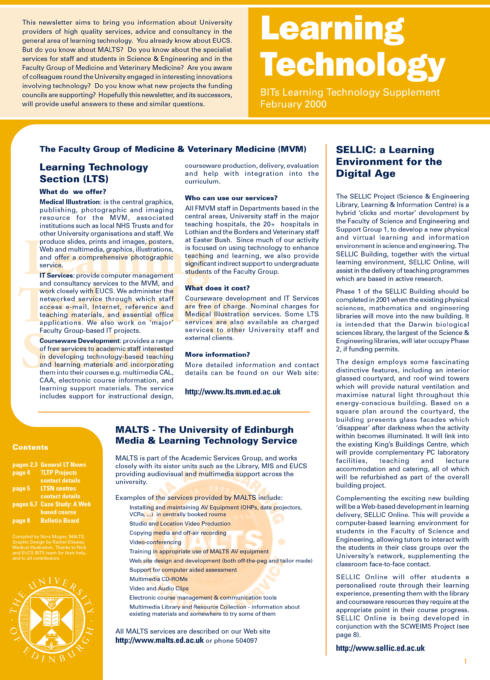
As you can see at the top left of this first issue of the Learning Technology Supplement, this insert addresses staff and students directly. Through clear and brightly coloured design, the Supplement aims to reach an audience not already engaged with new technology services. The style and editorial decisions reflect a strong motivation to expand the use of Web-based technologies to enhance curriculum and the student experience.
|
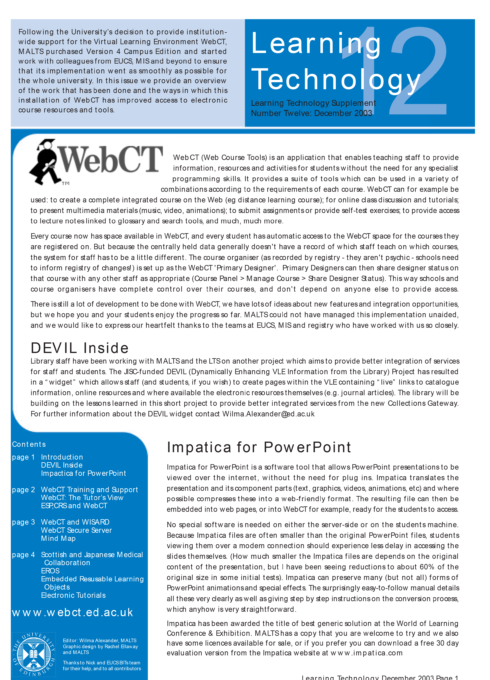
The December 2003 Supplement announces to staff and students the decision to purchase the WebCT platform to support online learning as a central service. While different schools and colleges were already using a few different learning platforms, the implementation of WebCT introduced a University-wide solution. The functionality and design of early virtual learning environments enabled innovative teaching methods but also restricted how content might be structured or shared.
|
|
In the early 2000s, multiple departments, including Learning Technology, Computing Services, and the Library, came together as Information Services. To reflect this new integrated department, the Graphic Design team developed a new visual identity with a fresh new IS logo. One of the designers of this new logo talks about the experience in the video below.
‘I actually allowed myself to be quite excited about the idea of design. Just because you've done that. And it was so strikingly different and simple and we used it with pride ever after.’ – Nick Stroud, former Editor of BITs
|
With the integration of several large departments into Information Services, the range of news and developments to share with BITs readers increased exponentially. At the same time, new Web-based communication platforms gained popularity, allowing users to more easily sift through large amounts of information and read only relevant updates. These issues of BITs reflect how the publication changes in response to these institutional and technological changes throughout the early 2000s.
|
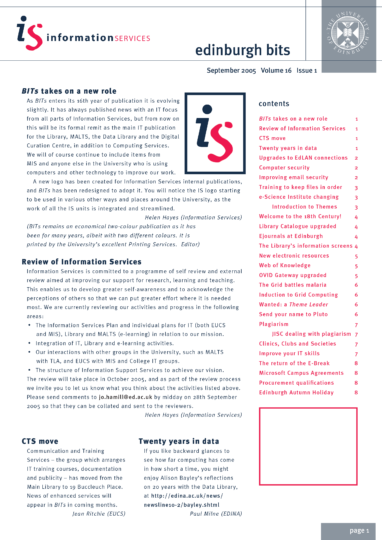
In September 2005, BITs adopted the new IS logo and announced to staff and students that the remit of the publication will reflect the new integrated service, officially expanding to cover a wider range of topics than just computing.
|
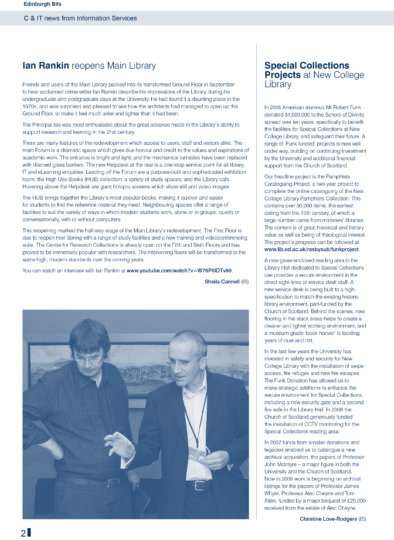
BITs featured the redevelopment of the Main Library in October 2009, showcasing not only the building renovations but also specialised and emerging services, such as Digital Library resources and research data repositories. It also promoted the 'Centre for Research Collections', now the main space for anyone accessing the University's Heritage Collections, where digital and print issues of BITs now live permanently in the University Archives.
|
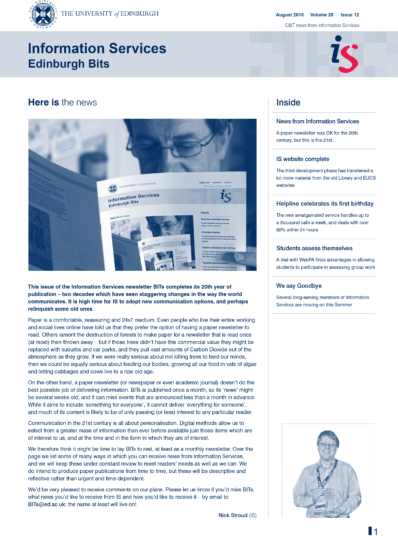
In August 2010, the days of the monthly BITs newsletter came to an end. To ‘prevent the destruction of forests’ and embrace new customisable communication methods, the publication transitioned to less frequent print issues, becoming 'descriptive and reflective rather than urgent and time-dependent'.
Not only did the August 2010 issue, seen above, mark the end of the monthly publication of BITs, it also marked the end of Nick's editorship. Watch this video to learn about the 'magic' behind the creation of BITs in the ‘bulletin’ era and how graphic design magnified its impact.
|
